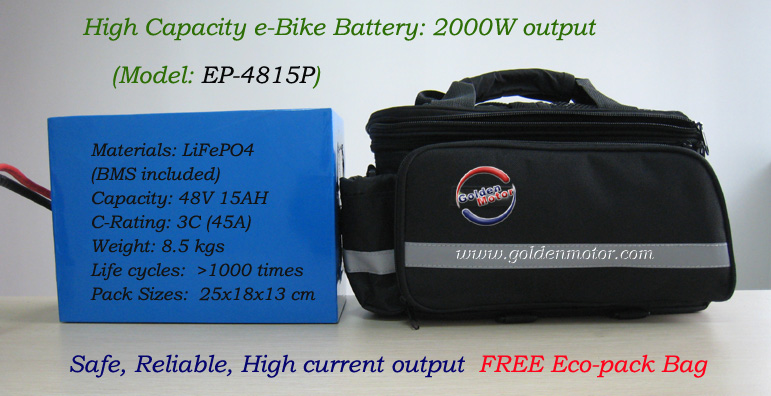No no, what I mean is that I took out some bad cells, then I re-arranged it to 13 cells in series like before, and 5 in paralell. Before it was 6 in paralell.
That's a relief, so you're obviously not using a 48V 15Ah Golden Motor battery pack:

And you must have taken out a total of 13 x 18650 LiMn cells
(6 bad and 7 good) from the old pack to convert it into a 12.5Ah pack.

As both of your packs are now 13S LiMn you could effectively join them together in parallel to make one 22.5Ah pack.
But they can also be kept as two separate packs that could be plugged together for charging and discharging provided both packs were at similar voltages.
While they were plugged together in parallel, their voltages would always remain the same.
The only reason to use diodes in the battery power leads would be to prevent excessive current from flowing from one battery to the other
if their individual voltages were substantially different when they were first connected together.
Unfortunately, if diodes are fitted, the regenerative braking function will not work, as no regen current will be able to return to either of the batteries.
The diodes could also allow an excessive voltage build up at the controller during a high speed downhill descent, as there is nowhere for the residual generated voltage to go.
Now for the charger:
Idea was to use two diodes to split charging current to two batteries. They would then simply get half charging current, and each BMS would shut off when the pack was full. What I am concerned about is how to arrange the diodes to avoid disaster...
As both packs need to be fully charged to the same 54.6V
(13S x 4.2V) no diodes should be required for charging, you would simply join the charging leads together in parallel to a single charging connector to use a single charger, or keep them separate to use two individual chargers for a much quicker charge.
The voltage of both batteries should remain identical throughout the charging process. The voltage from the charger will be identical on both batteries, and the current will automatically be split between the two batteries in relation to their capacities.
The old 12.5Ah pack should draw slightly more current than the new 10Ah pack if the older cells are still in good condition, but it could draw less current if the capacity of the old cells has degraded by more than 20%.
Placing diodes in series with the charging circuit would result in a slightly lower charging voltage at the
BMS (54V instead of the required 54.6V) due to the 0.6V voltage drop across the diodes. This slightly lower voltage would reduce the ability of the
BMS to properly balance all of the cells at the end of the charge.
If both batteries are used every time, they should always be at an identical voltage, but if you occasionally used just one battery, you would have to make sure that both batteries were either fully charged
or reading within 1 volt of each other before connecting them both together in parallel again.
Alan